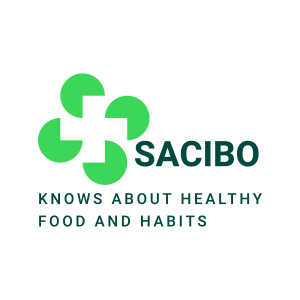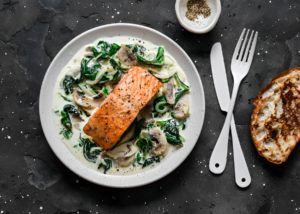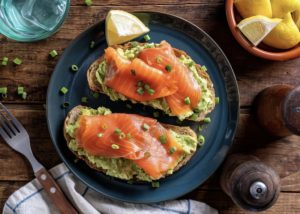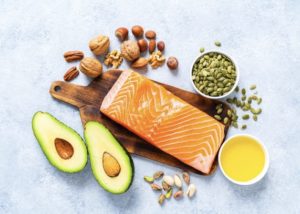- Home
- /
- Vitamins etc.
- /
- Macronutrients
- /
- Trans Fats
- /
- Trans Fats: What matters...
- The Multifaceted Trans Fats
- Science for our health
- The Trans Fat Conundrum
- Choice of Frying Oil
- The Fat Smoke Point Table
- What else can destroy oils
- Influence trans fats on cardiovascular system
- The General Inflammation: one more consequence
- What do trans fats spoil else?
- The safer ways of cooking: the frying alternatives
The Multifaceted Trans Fats
In the world of nutrition, few subjects carry as much weight as the impact of our dietary choices on our overall health. Among these, trans fats have emerged as a notorious adversary, lurking within our favorite indulgences and posing a complex array of threats to our well-being. Beyond the crispy delights and satisfying textures of fried foods lies a story of risk and consequence that spans far beyond the cardiovascular concerns that first brought trans fats to the spotlight.
In this exploration, we unravel the multifaceted dangers posed by trans fats to our bodies, including in connection with smoke point. Delving beyond the surface, we uncover the intricate relationships between trans fats and inflammation, metabolic harmony, cognitive function, and even the resilience of our immune defenses. This isn’t just a tale of dietary caution, but a comprehensive understanding of how our culinary choices can shape the very foundations of our health.
As we delve into the nuances of this complex narrative, we aim to shed light on the often underestimated ways in which trans fats can cast a shadow over various facets of our physical and mental well-being. From the delicate dance between inflammation and chronic diseases to the intricate balance of hormones and the profound influence on cognitive vitality, we lay bare the interconnected web woven by the consumption of these harmful fats.
Science for our health
Through scientific insights, real-world examples, and a forward-looking perspective, we arm ourselves with knowledge to make informed decisions about our diets and cooking practices. While the dangers of trans fats are undeniably real, so too is the power we hold to take charge of our health.
Fried foods are an indulgence that tantalizes our taste buds and evokes a sense of comfort. However, beyond the crispy exteriors and mouthwatering aromas lies a subject of growing concern – trans fats. The allocation of trans fats from oil during frying is an intricate process that holds significant importance for both culinary enthusiasts and health-conscious individuals. In this article, we delve into the science behind trans fat allocation, shedding light on how the type of oil, frying conditions, and culinary practices impact the final trans fat content in our fried delights.
The Trans Fat Conundrum
Trans fats are unsaturated fatty acids that can be found in both natural and artificial forms. While small amounts of trans fats can occur naturally in certain animal products, the real concern arises from artificial trans fats – often generated through the partial hydrogenation of oils. These trans fats have been linked to an increased risk of heart diseases, making it crucial to understand their presence in fried foods.
About fat in general read here: Fats and Healthy Eating
Choice of Frying Oil
The type of oil used for frying plays a pivotal role in the allocation of trans fats. Oils differ in their composition of fatty acids, smoke points, and stability under high heat. When heated, oils can undergo a process called oxidative degradation, where they break down into free fatty acids and harmful compounds like trans fats. Oils with higher smoke points and greater stability, such as peanut oil, sunflower oil, and canola oil, tend to produce fewer trans fats during frying compared to oils with lower smoke points like butter or coconut oil.
The Fat Smoke Point Table
| Cooking Fat | Smoke Point (°F) | Smoke Point (°C) | Refined/Unrefined |
|---|---|---|---|
| Extra Virgin Olive Oil | 325°F (165°C) | 163°C | Unrefined oil |
| Olive Oil (Refined) | 465°F (240°C) | 240°C | Refined oil |
| Coconut Oil (Refined) | 400°F (204°C) | 204°C | Refined oil |
| Coconut Oil (Unrefined) | 350°F (177°C) | 177°C | Unrefined oil |
| Butter (creamy) | 350°F (177°C) | 177°C | |
| Ghee (Clarified Butter) | 485°F (252°C) | 252°C | |
| Unrefined Canola Oil | 225°F (107°C) | 107°C | Unrefined oil |
| Unrefined Grapeseed Oil | 320°F (160°C) | 160°C | Unrefined oil |
| Refined Grapeseed Oil | 420°F (216°C) | 216°C | Refined oil |
| Avocado Oil | 520°F (271°C) | 271°C | Unrefined oil |
| Peanut Oil | 450°F (232°C) | 232°C | Refined oil |
| Unrefined Sunflower Oil | 225°F (107°C) | 107°C | Unrefined oil |
| Refined Sunflower Oil | 440°F (227°C) | 227°C | Refined oil |
| Soybean Oil | 450°F (232°C) | 232°C | Refined oil |
| Vegetable Oil | 400°F (204°C) | 204°C | Refined oil |
| Sesame Oil | 410°F (210°C) | 210°C | Unrefined oil |
| Lard | 370°F (188°C) | 188°C |
This comprehensive table covers a wide range of cooking fats, including lard and refined grapeseed oil. As always, choosing the right cooking fat for your dish involves considering its smoke point, flavor, and the cooking method you plan to use.
While the allure of fried foods remains irresistible, understanding the allocation of trans fats from oil during frying is vital for maintaining a balanced diet and reducing health risks. By choosing the right type of oil, controlling frying conditions, and adopting smart culinary practices, we can savor the delights of fried cuisine while minimizing the intake of harmful trans fats. In the intersection of taste and health, knowledge truly becomes our most valuable ingredient.
What else can destroy oils
Diving deeper into the realm of cooking fats, we uncover a symphony of factors that dance alongside temperature, shaping the performance and impact of oils. Beyond the thermometer’s reading, several crucial elements influence the behavior of oils during cooking, adding layers of complexity to our culinary choices.
- Refining Processes: The journey from raw ingredient to the bottle involves refining processes that affect the oil’s purity and smoke point. Refined oils often have higher smoke points due to the removal of impurities, making them suitable for high-heat cooking. Unrefined oils retain more natural flavors and nutrients but may have lower smoke points, necessitating careful consideration of the cooking method.
- Quality and Source: The source of oil – be it olives, coconuts, or seeds – matters. High-quality, fresh ingredients tend to yield superior oils with better flavors and healthier nutrient profiles. Choosing oils derived from reputable sources ensures that you’re working with a foundation of quality that carries through to your dishes.
- Storage and Age: Oils are sensitive to light, heat, and oxygen. Storing oils in dark, airtight containers and away from direct sunlight helps preserve their integrity. Over time, oils can go rancid due to oxidation, affecting both flavor and health benefits. Using fresh oils contributes to better cooking outcomes.
Navigating these intricate nuances empowers home cooks and chefs alike to harness the true potential of cooking fats. Just as a conductor guides an orchestra to create harmonious melodies, understanding these multifaceted factors guides us towards crafting dishes that sing with both health-consciousness and culinary delight.
Influence trans fats on cardiovascular system
The harmful effects of trans fats cannot be overstated. These artificially created fats have been recognized as a significant contributor to cardiovascular diseases, a leading cause of global mortality. Unlike other fats, trans fats not only raise the levels of “bad” LDL cholesterol in the bloodstream but also simultaneously lower the levels of “good” HDL cholesterol. This double-edged impact creates a perfect storm within our arteries, leading to atherosclerosis—the narrowing and hardening of blood vessels.
Imagine trans fats as silent infiltrators. They sneak into our diets disguised within our favorite fried foods, baked goods, and processed snacks. As we relish the crispiness of a potato chip or the savory delight of a deep-fried delicacy, these trans fats stealthily work against us, clogging arteries, and increasing the risk of heart attacks and strokes.
What makes trans fats especially treacherous is their ability to elude immediate detection. Unlike some dietary risks that exhibit swift repercussions, the damage caused by trans fats often accumulates over time, only revealing its true impact when it’s too late. This delayed manifestation is what makes them akin to ticking time bombs, wreaking havoc in our bodies while we remain oblivious.
Eliminations around the World
Governments and health organizations worldwide have recognized the danger posed by trans fats. In response, many countries have implemented regulations to limit or eliminate the use of artificial trans fats in food production. The transparency brought about by mandatory labeling of trans fat content empowers consumers to make informed choices about the foods they consume.
As individuals, understanding the peril of trans fats is a vital step towards safeguarding our health. By reducing our consumption of foods rich in trans fats, we can take proactive measures to protect our cardiovascular well-being. Opting for fresh, unprocessed ingredients and healthier cooking methods can go a long way in minimizing our exposure to these detrimental fats.
The allocation of trans fats from oil during frying is not merely a culinary consideration; it’s a health imperative. Acknowledging the harm these fats can cause motivates us to make conscious choices in our diets. As we savor the pleasures of fried cuisine, let’s not forget that the choices we make today shape our health tomorrow.
The General Inflammation: one more consequence
Beyond their impact on cardiovascular health, trans fats also act as potent instigators of inflammation within the human body. Inflammation, usually a defense mechanism against harm, can turn into a destructive force when perpetuated by the consumption of trans fats.
How does it happen
When we consume trans fats, they trigger a cascade of inflammatory responses within our body. These responses involve the activation of immune cells and the release of pro-inflammatory molecules. While inflammation is a natural part of the body’s healing process, chronic inflammation caused by the consumption of trans fats can lead to a range of health problems that extend far beyond the cardiovascular system.
Inflammation is the common thread that links trans fats to various ailments, such as diabetes, obesity, and even certain types of cancer. As trans fats infiltrate our cells and tissues, they disrupt normal cellular functions and contribute to a state of prolonged inflammation. This sustained inflammation not only damages cells but also hampers the body’s ability to maintain a harmonious balance.
In which connection here is the brain
Moreover, the connection between trans fats and inflammation goes beyond physical health. Emerging research suggests that trans fats might also influence mental well-being. Prolonged inflammation has been associated with an increased risk of depression and cognitive decline. As the brain is not immune to the effects of inflammation, the consumption of trans fats could potentially influence our mood, cognitive function, and overall mental health.
About food for brain read here: The MIND Diet: Nourishing Your Brain for Optimal Health
Understanding the role of trans fats in inflammation underscores the urgency of reducing their consumption. By doing so, we not only safeguard our cardiovascular health but also mitigate the risk of chronic inflammation that can lead to a host of interconnected health issues. As science delves deeper into the intricacies of how our dietary choices affect our body’s inflammatory responses, it becomes evident that minimizing trans fats in our diets is a proactive step toward nurturing holistic well-being.
In the grand symphony of our body’s intricate processes, the notes of inflammation, when played out of tune by the consumption of trans fats, can lead to discord and disharmony. Embracing a diet rich in natural, unprocessed foods and healthier fats can help restore the harmonious rhythm that our bodies need to thrive – a rhythm that resonates with vitality and enduring health.
What do trans fats spoil else?
Trans fats, beyond their role in cardiovascular issues and inflammation, can trigger a domino effect of health problems that extend throughout the body. As we delve deeper into the complexities of their impact, it becomes evident that the consumption of trans fats can lead to a range of interconnected health concerns.
1. Metabolic Disruption
Trans fats have been linked to disruptions in metabolism, particularly in relation to insulin resistance. Insulin resistance is a precursor to type 2 diabetes, where the body’s cells become less responsive to the hormone insulin, leading to elevated blood sugar levels.
2. Weight Gain and Obesity
Consumption of trans fats may contribute to weight gain and obesity. These fats can alter the body’s ability to regulate appetite and satiety, potentially leading to overeating and subsequent weight gain.
About Gene of Overweight People read in this article: The gene of overweight people: The weight loss strategy
3. Cellular Dysfunction
Trans fats can penetrate cell membranes and interfere with their normal functioning. This interference can disrupt vital cellular processes, potentially increasing the risk of various diseases.
4. Skin Health
Even our skin isn’t immune to the detrimental effects of trans fats. These fats can affect the skin’s natural barrier function, potentially exacerbating conditions like acne and other skin inflammations.
5. Fertility and Reproductive Health
Emerging research suggests that trans fats might also negatively impact fertility and reproductive health. They could potentially interfere with hormone production and disrupt normal reproductive processes.
6. Cognitive Health
The brain, being a fatty organ, is susceptible to the effects of trans fats. Some studies have indicated a potential link between trans fat consumption and cognitive decline, including an increased risk of neurodegenerative disorders like Alzheimer’s disease.
7. Bone Health
The excessive consumption of trans fats may also be linked to poor bone health. Some research suggests that trans fats could interfere with the absorption of calcium, a critical nutrient for maintaining strong bones.
8. Immune System Dysfunction
Chronic inflammation caused by trans fats can compromise the immune system’s ability to function effectively. This can leave the body more vulnerable to infections and illnesses.
As we navigate the intricacies of human health, it’s clear that the harmful effects of trans fats are not confined to one specific system or organ. Their impact is systemic, affecting multiple aspects of our well-being. Recognizing the far-reaching consequences of trans fat consumption underscores the importance of adopting dietary habits that prioritize whole, unprocessed foods and healthier cooking methods. By doing so, we take proactive steps to fortify our bodies against the diverse array of health challenges that trans fats can potentially instigate.
The safer ways of cooking: the frying alternatives
Amidst the discussion of trans fats and their adverse effects, it’s essential to shift our focus towards safer and healthier cooking alternatives that can be embraced to create delicious meals without compromising our well-being. As we navigate the culinary landscape, let’s explore some of these cooking variants that not only preserve the flavor and texture of our favorite dishes but also promote better health.
1. Baking
Baking is a versatile and health-conscious cooking method that minimizes the use of oil. It allows ingredients to cook in their own natural juices, retaining their nutrients and flavors. From savory casseroles to sweet treats, baking offers a wide range of possibilities without subjecting your food to excessive trans fats or harmful compounds.
2. Grilling
Grilling is a beloved cooking method that imparts a smoky flavor and desirable char to various foods. Whether you’re grilling vegetables, lean meats, or seafood, this technique requires minimal oil, reducing the risk of trans fat exposure. Plus, the high heat of grilling helps to cook off excess fat, making it a healthier option overall.
3. Steaming
Steaming is a gentle cooking method that preserves the natural colors, flavors, and nutrients of ingredients. By using steam to cook, you can create tender and vibrant dishes without the need for added oils. Steaming is particularly effective for vegetables, seafood, and grains.
4. Stir-Frying
Stir-frying is a quick and efficient way to prepare meals while using minimal oil. This Asian-inspired technique involves cooking small, evenly cut ingredients at high heat for a short time. The result is a dish that’s packed with flavor and retains the nutritional value of the ingredients.
5. Roasting
Roasting involves cooking food in the oven at high temperatures. While a small amount of oil can be used for flavor and browning, roasting primarily relies on the natural juices and fats present in the ingredients. This method is excellent for creating crispy textures and caramelized flavors in vegetables, meats, and even fruits.
6. Stewing
Stewing involves gently simmering food in liquid, such as water or broth. It’s a delicate cooking method that’s well-suited for delicate proteins like fish and eggs. Poaching minimizes the need for oil and results in moist, flavorful dishes.
7. Sous-Vide
Sous-vide cooking is gaining popularity for its precise temperature control and ability to retain the natural flavors and nutrients of ingredients. Food is vacuum-sealed and cooked in a water bath at a controlled temperature, resulting in consistently cooked, tender dishes without excessive oil or fats.
8. Air Frying
Air frying is a relatively new cooking method that uses hot air to cook food and create a crispy exterior. It requires significantly less oil than traditional frying methods, making it a healthier option for enjoying fried textures without the trans fat-related concerns.
Incorporating these safer cooking alternatives into your culinary repertoire not only promotes better health but also allows you to explore new flavors, textures, and cooking techniques. By making conscious choices in the kitchen, you can savor the pleasures of food while nourishing your body for a vibrant, fulfilling life.
Conclusion
In the grand tapestry of human health, the chapter on trans fats reveals a narrative that is both cautionary and empowering. The risks that these fats pose extend beyond the confines of cardiovascular health, painting a portrait of potential harm across multiple dimensions of our well-being. As we draw the curtain on this exploration, a crucial message emerges: our dietary choices are not isolated events; they reverberate throughout our bodies, touching every system, organ, and cell.
Armed with this newfound awareness, we stand at a crossroads of choice. We possess the ability to sculpt our diets in ways that embrace vitality and longevity. By opting for safer cooking methods, indulging in moderation, and replacing harmful fats with nourishing alternatives, we pave a path towards a healthier future.
Let this journey through the myriad dangers of trans fats serve as a compass guiding us towards conscious decisions. As we savor the flavors of life, let us also savor the knowledge that empowers us to protect our health. Just as trans fats have the potential to weave a tale of harm, we have the power to rewrite our story – one of resilience, well-being, and the pursuit of a life defined by the vibrant harmony of a body nurtured with care.
































































0 Comments